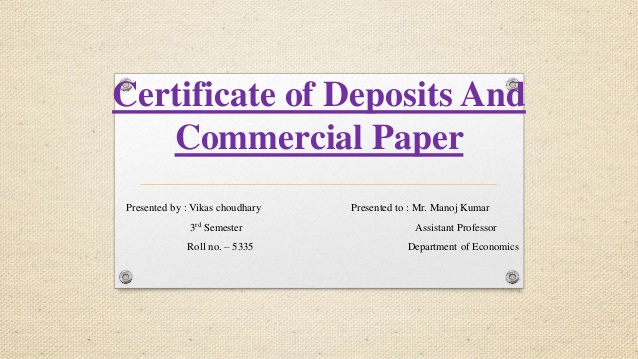Jl. Pajajaran No. 103 Bandung
Maaf, belum tersedia model untuk ditampilkan
Types of Working Capital
Contents
The gross concept of working capital is considerably useful in making correct estimate of working capital needs of the firm. Working capital is also understood in terms of net concept according to which excess of current assets over current liabilities represents working capital. Both the gross and net concepts are not to be regarded as mutually exclusive. The time taken from characteristics of working capital the purchase & use of raw materials to the production of finished goods is called the manufacturing cycle. The longer the period of manufacturing cycle, the larger the amount of the working capital required, because the funds get locked up in production for a longer period of time. It refers to that minimum amount of investment in current assets that has always to be true.

Capital provides subsistence to the labourers while they are engaged in production. Production today is a long-drawn-out affair, and has to pass through many stages. It may be after years that the goods reach the market and bring income to the manufacturer. Means must be found in the mean time to bridge this gap, and this is the function which capital performs. It provides means of subsistence for the workers when they are engaged in the work of production. Land is nature’s free gift to man; it is limited in area, and is of infinite variety.
Market
The capitalist class works solely on the profits since capital is required to run the economy. The labor class mostly generates a business, which is the majority. Selling to labour class at reduced prices but keeping a decent profit margin is the aim of the capitalist class. Liquidity ratios determine the ability of a business to meet its short-term requirements.
- The system of organizing distribution and production within the capitalist society is called a capitalist mode of production.
- Common examples of current assets include cash, accounts receivable, and inventory.
- In addition to using different accounts in its formula, it reports the relationship as a percentage as opposed to a dollar amount.
- Every business needs funds in order to run its day-to-day activities.
Private property can be either personal property, which is consumer goods, or can also be capital goods. The laws that deal with the subject of property are termed as property laws. While the monopoly is not expected, oligopoly is a desirable outcome. An oligopoly is when different companies compete with each other to earn better.
Working capital
In mergers or very fast-paced companies, agreements can be missed or invoices can be processed incorrectly. Working capital relies heavily on correct accounting practices, especially surrounding internal control and safeguarding of assets. Current assets are economic benefits that the company expects to receive within the next 12 months. The company has a claim or right to receive the financial benefit, and calculating working capital poses the hypothetical situation of the company liquidating all items below into cash.
Competition is essential to keep a check that other companies earn equally. If the other competing companies earn better, the labor class of people working in those companies will also gain better. Thus competition is a win-win situation for everyone involved in the capitalist economy. The competition takes place when more than one manufacturer is trying to sell the same or similar products to the same set of buyers.
It is in the nature of a quantitative definition that highlights attention on the levels of current assets for given activity. Broadly speaking, the term working capital is understood in two different but interlinked senses. In the first sense, working capital refers to sum total of all current assets to be employed in the business process.

Thus without proper production of commodities, the entire process of capitalism may be collapsed, and enough profits won’t be generated to run the capitalist economy. Unless the companies pump money to produce commodities for consumption, enough profits will not be generated. Demand and supply are primary structures in the capitalist economy. It follows the conclusion that in a competitive market, the per-unit cost of a particular product will change until it settles at an equal price. That is when the quantity demanded by the buyer and the amount supplied by the seller is the same; then, the resulting product will be an economic equilibrium for number and price.
Low liquidity would lead to insolvency of the firms if payments are not made on time. The company loses its reputation when it is not in position to pay its debts in time. Working capital fails to consider the specific types of underlying accounts. For example, imagine a company whose current assets are 100% in accounts receivable.
The Components of Working Capital Management
These liabilities stem out of purchase of raw materials on credit terms usually for a period of one to two months. Basic problem facing a financial manager of an enterprise is to trade-off between conflicting but equally important goals of liquidity and profitability. Greater the liquid resources of a firm less will be its profitability and vice-versa. It is classified on the basis of time factor; It constantly changes from one asses to another & continues to remain in the business process; Its size increases with the growth of business operations. The working capital requirement increases with the expansion & growth of business. Hence planning of the working capital requirements & its procurement must go hand in hand with the planning of the growth & expansion of the firm.

Working capital ensures the regular and timely payment of wages and salaries, thereby improving the morale and efficiency of employees. The rate of capital formation must be kept sufficiently high so that employment opportunities are enlarged to absorb the additions to working force of the country as a result of population https://1investing.in/ growth. In India, the stock of capital has not been growing at a fast enough rates so as to keep pace with the growth of population. Application of capital to agriculture, trade, transport and industry creates work on the farms, in the factories, in commercial houses and on roads, railways, ships, etc.
Department of State Fulbright research awardee in the field of financial technology. He educates business students on topics in accounting and corporate finance. Outside of academia, Julius is a CFO consultant and financial business partner for companies that need strategic and senior-level advisory services that help grow their companies and become more profitable. The harder they work, the more wages they will generate, and these wages, in turn, flow back into the economy.
Common examples of current assets include cash, accounts receivable, and inventory. Examples of current liabilities include accounts payable, short-term debt payments, or the current portion of deferred revenue. Working capital management represents the relationship between a firm’s short-term assets and its short-term liabilities. The goal of working capital management is to ensure that a company can afford its day-to-day operating expenses while, at the same time, investing the company’s assets in the most productive way.
Working capital ratios between 1.2 and 2.0 indicate a company is making effective use of its assets. Ratios greater than 2.0 indicate the company may not be making the best use of its assets; it is maintaining a large amount of short-term assets instead of reinvesting the funds to generate revenue. Working capital is a financial metric calculated as the difference between current assets and current liabilities. Working capital management is a strategy that requires monitoring a company’s current assets and liabilities to ensure its efficient operation. Working capital management is crucial to ensure that a company maintains sufficient cash flow to meet its short-term operating costs and obligations. Normally accounts receivables have maturity of 30 days after the billing date.
Permanent working capital changes constantly its form from one asset to another whereas fixed assets retain their form over a long period of time. A company may keep very big inventories & tie up its funds unnecessarily. A company may enjoy high liquidity but at the same time suffering from low profitability. When the amount of working capital is high, debtors tends to increase as we concentrate less on collection. Profit suffers even though sales is high because bad debt increases. The management has to provide for both kinds of working capital—permanent working capital and temporary working capital.
Types of Working Capital, Determinants of Working Capital
On sale of finished goods on credit, trade debtors or bills receivable result. Since fixed capital is invested in long term assets, it becomes necessary to adopt various systems of estimating depreciation. On the other hand working capital is invested in short term assets which last for one year only. Hence it is not necessary to adopt special accounting system for them.
Seasonality of Industry and Production Policy
Say a company has accumulated $1 million in cash due to its previous years’ retained earnings. If the company were to invest all $1 million at once, it could find itself with insufficient current assets to pay for its current liabilities. The amount of working capital a company has will typically depend on its industry. Some sectors that have longer production cycles may require higher working capital needs as they don’t have the quick inventory turnover to generate cash on demand.
If a company’s current assets do not exceed its current liabilities, then it may have trouble growing or paying back creditors. This percentage is arrived at by merely dividing the current belongings by the current liabilities. If the answer is less than 1.zero, this indicates the corporate has a negative working capital with too few liquid assets to cowl the quick time period bills. On the other hand, if the ratio is above a 2.zero this might indicate poor administration of the capital.
The excess of current assets over current liabilities is known as Net working capital. The principal objective here is to learn the composition and magnitude of current assets required to meet current liabilities. Gross working capital refers to the amount of funds invested in various components of current assets. It consists of raw materials, work in progress, debtors, finished goods, etc. 35.1, in a newly set up undertaking begins with conversion of cash into raw materials which are, in turn, transformed into work-in-process and then in finished goods. With the sale of merchandise finished goods turn into accounts receivable, presuming the goods are normally sold on credit terms.
The company can be mindful of spending both externally to vendors and internally with what staff they have on hand. It might indicate that the business has too much inventory or is not investing its excess cash. Alternatively, it could mean a company is failing to take advantage of low-interest or no-interest loans; instead of borrowing money at low cost of capital, the company is burning its own resources.
Working capitalrepresents a company’s capacity to pay its present liabilities with its present belongings. Examples- cash, marketable securities, accounts receivable and inventory. Under this approach current assets are maintained just to meet the current liabilities without keeping any cushion for the variations in working capital needs. The core working capital is financed by long-term sources of capital, and seasonal variations are met through short-term borrowings.
The factory that a man owns is his capital, but the profit that he gets out of it every year is his income. From the definition of capital, it is clear that capital consists of valuable economic goods which are scarce. Only that part of wealth, which is used productively, is called capital. The car which is used for personal enjoyment is wealth but not capital. Capital serves as an instrument of production.Anything which is used in production is capital. The firm finds it difficult to grow, profitable projects are not undertaken due to paucity of working capital.

How To Promote Nudes Online
You can offer subscription only content material to your viewers, and in addition live streaming pay per view content is supported on this platform. This is certainly one of the lowest charging platforms that we discovered for selling content. You... selengkapnya

In which Can You Perform Due Diligence?
A thorough due diligence investigation of the company’s monetary statements is vital if you plan to purchase it. It includes questions about the administration, ownership, and financial position of your company. There are several beneficial ratios to get evaluating a... selengkapnya

Chatiw ! Meet,chat & Relationship Customer Reviews On Google Play Store
You shall solely take pleasure in these options once you turn into a VIP member. In terms of age and gender, Chatiw has principally younger members from the age group 18 to 24. There are extra males than females who... selengkapnya

